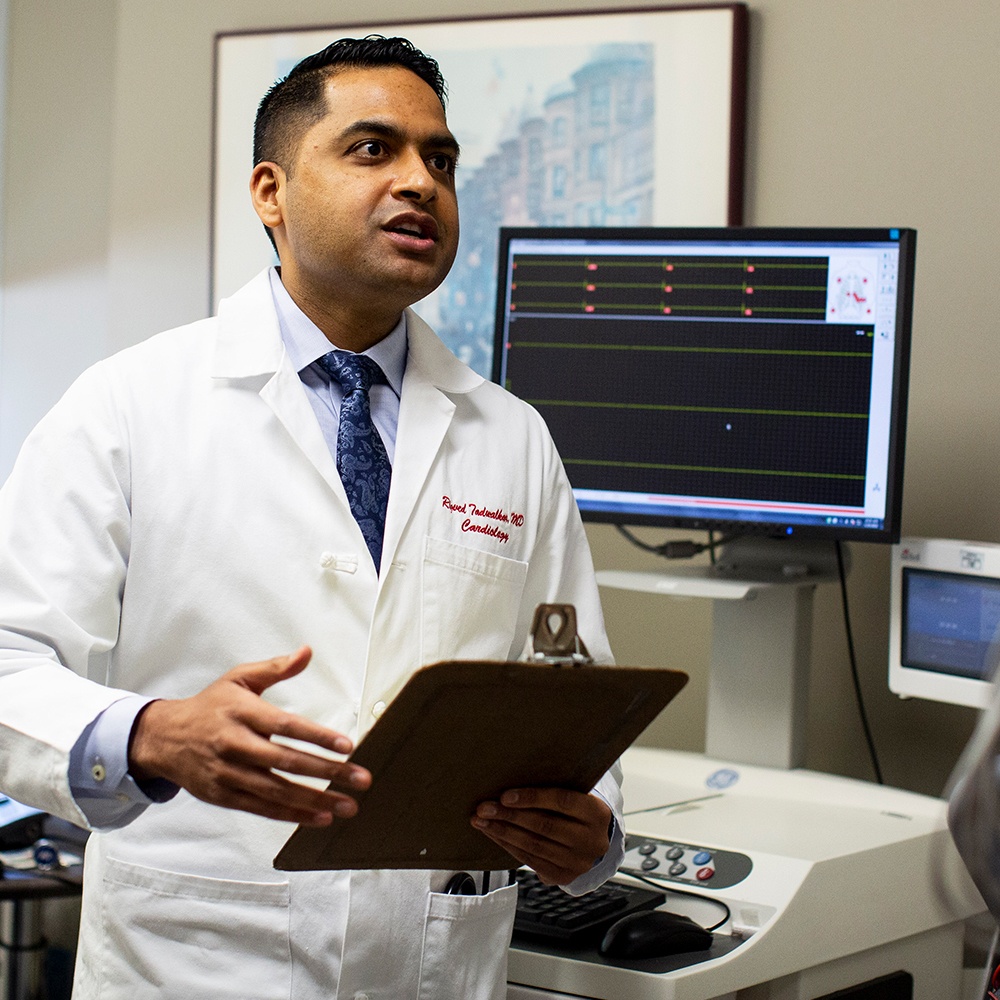Pericardial Disease

Overview
What is Pericardial Disease?
Pericardial disease, also called pericarditis, is an inflammation any of the layers of the pericardium, a sac which surrounds the heart. These layers hold the heart in place and help it work as well as protect against infection. This condition is usually mild and often goes away without treatment. Early diagnosis and treatment may help reduce long-term complications.
Pericardial disease can be acute, meaning it occurs suddenly or chronic, meaning long standing. Pericardial disease is grouped according to your symptoms and how long they last:
Acute pericardial disease
Acute pericardial disease happens suddenly and usually last 3 weeks.
Recurrent pericardial disease
Recurrent pericardial disease lasts about 4 to 6 weeks after an episode of acute pericardial disease.
Incessant pericardial disease
Incessant pericardial disease occurs four to six weeks and less than 3 months with continuous symptoms.
Chronic pericardial disease
Chronic pericardial disease develops slowly and lasts more than 3 momths.
Causes for pericardial disease include:
- Infections.
- Heart attack.
- Heart surgery.
- Tumors.
- Cancer.
- Radiation
- Trauma.
- Autoimmune diseases.
Early diagnosis and treatment may reduce long-term complications. If you have any symptoms of pericardial disease, visit your Saint John’s Physician Partners cardiologist to make sure.
Symptoms
Pericardial Disease Symptoms
A common symptom of acute pericardial disease is a sharp chest pain located in the center of the chest that may radiate to the neck and shoulder. Sitting up or leaning forward may alleviate the pain, while laying down makes it worse. If the chest pain feels like a heart attack, you should immediately call 911.
Other symptoms of pericardial disease may include,
- Low-grade fever.
- Increased heart rate.
- Tiredness.
- Shortness of breath and coughing.
- In severe cases you may also have swelling in your stomach and legs as well as low blood pressure.

Risks
Pericardial Disease Risks and Complications
Complications of pericardial disease may include:
Chronic constrictive pericarditis
Chronic constrictive pericarditis occurs when there is permanent thickening and scarring of the pericardium, preventing the heart from filling and emptying properly. Severe swelling of the legs and abdomen and shortness of breath are common symptoms.
Cardia tamponade
Cardia tamponade is a life-threatening condition when too much fluid collects in the pericardium. This doesn’t allow the heart to fill properly and less blood leaves the heart. There is a very significant drop in blood pressure and requires emergency treatment.
Pericardial effusion
Pericardial effusion is when there is fluid around the heart.
Diagnosis
Pericardial Disease Diagnosis
Your doctor will take a medical history and perform a physical exam. When your doctor listens to your heart sound using a stethoscope, pericardial disease has a specific sound that is called pericardial rub. Other tests may be:
ECG
Electrocardiogram (ECG) records the electrical signals that make your heart beat.
Blood Tests
Blood tests to check for heart attack or infection.
Chest X-ray
Chest X-ray can show changes in the size and shape of your heart.
Echogram
Echogram uses sound waves to create an image of your moving heart.
MRI
Magnetic resonance imaging (MRI) can reveal thickening, inflammation or other changes in the pericardium.
CT
Computerized tomography (CT) scan uses X-rays to create an image of your heart and chest.
Treatments
Pericardial Disease Treatments
Treatment for pericardial disease will vary depending on the cause and severity of your symptoms. Treatments may include:
- Pain relievers such as nonsteroidal anti-inflammatory agents (NSAIDs) or prescribed pain relievers.
- Colchicine is a drug that reduces inflammation.
- Corticosteriods to fight inflammation.
- Antibiotics.
When fluids buildup around the heart, your doctor may recommend drainage and surgery, including:
- Pericardiocentesis is a procedure when your doctor uses a sterile needle or catheter to drain excess fluid from the pericardial cavity.
- Pericardiectomy is a procedure that removes the entire pericardium.
Your Saint John’s Physician Partners will discus all your treatment options including benefits and risks so you can make an informed decision.

Specialists

















